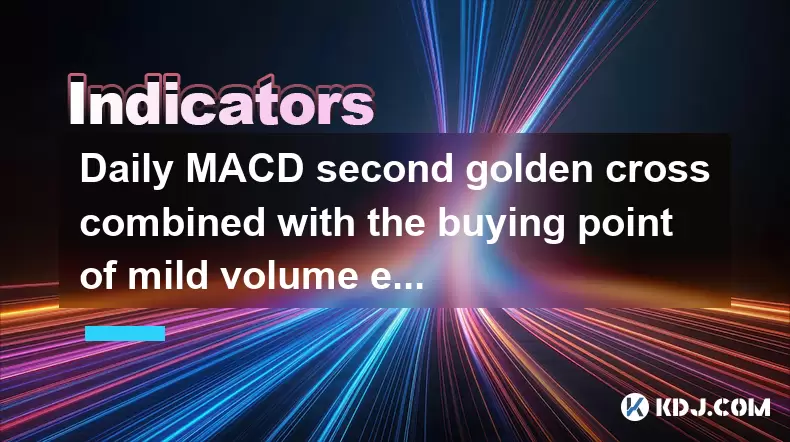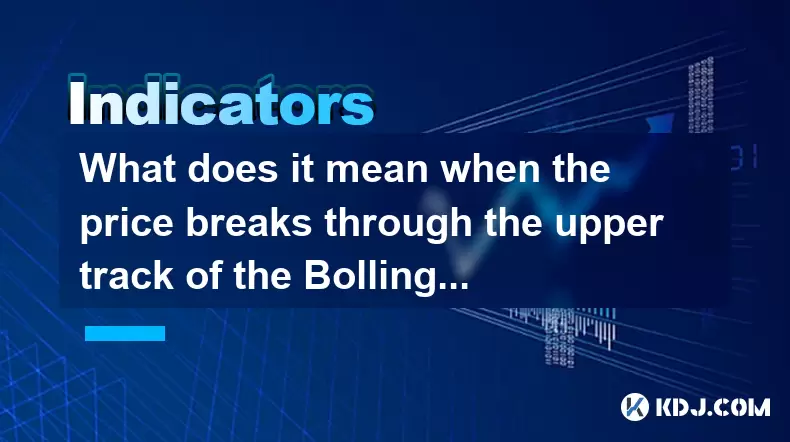-
 Bitcoin
Bitcoin $117500
-0.66% -
 Ethereum
Ethereum $3760
-1.24% -
 XRP
XRP $3.087
-2.54% -
 Tether USDt
Tether USDt $0.9999
-0.01% -
 BNB
BNB $803.6
-4.03% -
 Solana
Solana $180.3
-4.15% -
 USDC
USDC $0.9998
-0.01% -
 Dogecoin
Dogecoin $0.2218
-4.92% -
 TRON
TRON $0.3366
3.71% -
 Cardano
Cardano $0.7785
-3.73% -
 Hyperliquid
Hyperliquid $42.90
-4.75% -
 Sui
Sui $3.797
-7.45% -
 Stellar
Stellar $0.4165
-2.32% -
 Chainlink
Chainlink $17.65
-4.17% -
 Bitcoin Cash
Bitcoin Cash $561.0
-3.86% -
 Hedera
Hedera $0.2611
-4.54% -
 Avalanche
Avalanche $24.33
-7.02% -
 UNUS SED LEO
UNUS SED LEO $8.972
0.06% -
 Litecoin
Litecoin $107.6
-2.79% -
 Toncoin
Toncoin $3.254
-1.84% -
 Shiba Inu
Shiba Inu $0.00001306
-4.69% -
 Ethena USDe
Ethena USDe $1.001
0.00% -
 Uniswap
Uniswap $10.10
-4.83% -
 Polkadot
Polkadot $3.902
-4.63% -
 Monero
Monero $315.1
-2.57% -
 Dai
Dai $1.000
0.02% -
 Bitget Token
Bitget Token $4.499
-2.53% -
 Pepe
Pepe $0.00001145
-7.38% -
 Cronos
Cronos $0.1479
6.07% -
 Aave
Aave $281.3
-4.07%
Daily MACD second golden cross combined with the buying point of mild volume enlargement
A daily MACD second golden cross with mild volume enlargement signals strong bullish momentum, ideal for entering long positions in crypto like BTC or ETH.
Jul 29, 2025 at 03:36 am

Understanding the MACD Indicator and Its Core Components
The Moving Average Convergence Divergence (MACD) is one of the most widely used momentum indicators in cryptocurrency trading. It consists of three main elements: the MACD line, the signal line, and the histogram. The MACD line is calculated by subtracting the 26-period Exponential Moving Average (EMA) from the 12-period EMA. The signal line, typically a 9-period EMA of the MACD line, acts as a trigger for buy and sell signals. The histogram visualizes the distance between the MACD line and the signal line, providing insight into the strength of momentum.
When traders refer to a golden cross in the context of MACD, they are identifying the moment the MACD line crosses above the signal line, suggesting a potential shift from bearish to bullish momentum. A second golden cross implies that this bullish crossover has occurred more than once within a short time frame, often following a pullback after an initial upward move. This pattern is considered more reliable than the first crossover, as it indicates sustained buying interest after a temporary consolidation.
Identifying the Second Golden Cross on Daily Charts
To spot a daily MACD second golden cross, traders must first observe the initial golden cross, which marks the beginning of a potential uptrend. After this initial crossover, price may retrace or consolidate, causing the MACD line to dip back toward or slightly below the signal line. If the price stabilizes and begins to rise again, the MACD line may cross above the signal line for a second time. This second crossover is critical because it suggests renewed bullish momentum after a healthy correction.
Traders should ensure the following conditions are met:
- The first golden cross occurred within the past 10 to 15 trading days.
- The price has undergone a moderate pullback, typically not exceeding 30% of the initial upward move.
- Volume during the pullback shows no signs of panic selling or capitulation.
- The second crossover happens while the overall trend remains above key moving averages, such as the 50-day or 200-day EMA.
This setup increases the probability that the bullish trend is resuming rather than reversing.
Interpreting Mild Volume Enlargement as a Confirmation Signal
Volume plays a crucial role in validating the strength of a MACD-based signal. In the context of a second golden cross, mild volume enlargement refers to a noticeable but not extreme increase in trading volume during the days surrounding the second crossover. This volume pattern indicates growing participation from buyers without the presence of excessive speculation or FOMO-driven spikes.
To assess volume properly:
- Compare the volume of the crossover day to the average volume over the previous 10 days.
- Look for volume that is 1.3 to 1.8 times higher than the average, which qualifies as "mild enlargement."
- Ensure that volume does not spike excessively, which could suggest a short-term top or distribution.
- Confirm that volume remains supportive in the days following the crossover, avoiding rapid decline.
This balance helps distinguish genuine accumulation from noise, making the entry point more reliable.
Step-by-Step Strategy for Entry Using This Setup
Executing a trade based on the daily MACD second golden cross with mild volume enlargement requires precision and discipline. The following steps outline a detailed entry strategy:
- Confirm the first golden cross occurred within the last two weeks and was followed by a price advance.
- Wait for a pullback where the price retraces to a support level, such as a prior resistance-turned-support or a key Fibonacci level.
- Monitor the MACD histogram for signs of momentum contraction during the pullback, followed by expansion as the second crossover forms.
- Verify mild volume enlargement on the day of or immediately after the second crossover.
- Enter a long position at the close of the candle where the second crossover is confirmed, or use a limit order slightly above the candle’s high to ensure execution.
- Set a stop-loss below the lowest point of the pullback, ideally near a recent swing low or a broken support level.
- Use a risk-reward ratio of at least 1:3, adjusting position size accordingly.
This method ensures that entries are not only based on indicator signals but also supported by price action and volume dynamics.
Applying the Strategy to Cryptocurrency Markets
Cryptocurrency markets exhibit higher volatility and 24/7 trading, which can amplify both the reliability and risk of technical signals. When applying the daily MACD second golden cross strategy to assets like Bitcoin (BTC) or Ethereum (ETH), traders must account for market cycles and external catalysts.
For instance, during a bull market phase, second golden crosses tend to occur more frequently and with stronger follow-through. In contrast, during sideways or bearish phases, false signals are more common. To mitigate this:
- Focus on major cryptocurrencies with consistent trading volume.
- Align the signal with higher time frame trends, such as the weekly chart direction.
- Avoid entering during major news events or exchange outages that can distort volume and price.
- Use additional filters, such as RSI staying above 50 or price holding above the 20-day moving average.
This contextual awareness enhances the signal’s validity in a fast-moving digital asset environment.
Frequently Asked Questions
What is the difference between a first and second MACD golden cross?
The first golden cross marks the initial shift from bearish to bullish momentum and may occur after a prolonged downtrend. It can be less reliable due to false breakouts. The second golden cross happens after a pullback following the first move and indicates renewed buying pressure, often with stronger confirmation from price and volume.
How do I adjust this strategy for lower time frames like 4-hour charts?
On 4-hour charts, the same principles apply but with compressed parameters. Use a 9-period and 19-period EMA for MACD instead of 12 and 26, and a 7-period signal line. Confirm mild volume enlargement relative to the 4-hour average. However, be cautious of increased noise and whipsaws in shorter time frames.
Can this strategy be automated using trading bots?
Yes, trading bots can be programmed to detect MACD crossovers and volume thresholds. Set conditions to trigger when the MACD line crosses above the signal line for the second time within 15 days, with volume exceeding the 10-day average by 30–80%. Backtest the bot on historical data to refine entry and exit logic.
What should I do if volume spikes too high during the second crossover?
Excessive volume may indicate distribution or a short squeeze rather than sustainable accumulation. In such cases, delay entry until the next candle confirms continuation with stable volume. Consider taking a partial position with tighter stop-loss or waiting for a retest of support.
Disclaimer:info@kdj.com
The information provided is not trading advice. kdj.com does not assume any responsibility for any investments made based on the information provided in this article. Cryptocurrencies are highly volatile and it is highly recommended that you invest with caution after thorough research!
If you believe that the content used on this website infringes your copyright, please contact us immediately (info@kdj.com) and we will delete it promptly.
- Bitcoin Price Drop: Navigating the Dip with Corporate Strategies
- 2025-07-30 07:30:12
- BNB's Bullish Cycle: ChatGPT Weighs In on the Future
- 2025-07-30 06:50:12
- XRP's Wild Ride: Open Interest, Price Crash Fears, and What's Next
- 2025-07-30 07:50:12
- SEC Greenlights In-Kind Creations: A Game Changer for Bitcoin ETPs?
- 2025-07-30 07:50:12
- Arbitrum (ARB) Price Prediction: Navigating the Ups and Downs of the Best ETH Eco
- 2025-07-30 06:50:12
- Ethereum, Ruvi AI, Presale: The Next Big Thing in Crypto?
- 2025-07-30 07:30:12
Related knowledge

What does it mean when the EMA combination crosses upward for the first time after sideways trading?
Jul 28,2025 at 03:43pm
Understanding the EMA and Its Role in Technical AnalysisThe Exponential Moving Average (EMA) is a widely used technical indicator in cryptocurrency tr...

What does it mean when the price breaks through the upper track of the Bollinger Band but the RSI is overbought?
Jul 30,2025 at 03:35am
Understanding Bollinger Bands and Their Upper TrackBollinger Bands are a widely used technical analysis tool developed by John Bollinger. They consist...

What signal does the ROC send when it rises rapidly from a low level and breaks through the zero axis?
Jul 27,2025 at 10:15am
Understanding the Rate of Change (ROC) IndicatorThe Rate of Change (ROC) is a momentum-based oscillator used in technical analysis to measure the perc...

What does it mean when the moving averages are glued together and a gap appears?
Jul 29,2025 at 07:49pm
Understanding Moving Averages in Cryptocurrency TradingMoving averages are among the most widely used technical indicators in the cryptocurrency tradi...

What does it mean when TEMA breaks through the long-term downward trend line?
Jul 29,2025 at 02:50pm
Understanding the Role of Smart Contracts in Decentralized Finance (DeFi)Smart contracts are self-executing agreements with the terms of the agreement...

What does it mean when the price breaks through the double bottom neckline and the moving averages are arranged in a bullish pattern?
Jul 28,2025 at 10:57am
Understanding the Double Bottom PatternThe double bottom is a widely recognized reversal chart pattern in technical analysis, particularly within the ...

What does it mean when the EMA combination crosses upward for the first time after sideways trading?
Jul 28,2025 at 03:43pm
Understanding the EMA and Its Role in Technical AnalysisThe Exponential Moving Average (EMA) is a widely used technical indicator in cryptocurrency tr...

What does it mean when the price breaks through the upper track of the Bollinger Band but the RSI is overbought?
Jul 30,2025 at 03:35am
Understanding Bollinger Bands and Their Upper TrackBollinger Bands are a widely used technical analysis tool developed by John Bollinger. They consist...

What signal does the ROC send when it rises rapidly from a low level and breaks through the zero axis?
Jul 27,2025 at 10:15am
Understanding the Rate of Change (ROC) IndicatorThe Rate of Change (ROC) is a momentum-based oscillator used in technical analysis to measure the perc...

What does it mean when the moving averages are glued together and a gap appears?
Jul 29,2025 at 07:49pm
Understanding Moving Averages in Cryptocurrency TradingMoving averages are among the most widely used technical indicators in the cryptocurrency tradi...

What does it mean when TEMA breaks through the long-term downward trend line?
Jul 29,2025 at 02:50pm
Understanding the Role of Smart Contracts in Decentralized Finance (DeFi)Smart contracts are self-executing agreements with the terms of the agreement...

What does it mean when the price breaks through the double bottom neckline and the moving averages are arranged in a bullish pattern?
Jul 28,2025 at 10:57am
Understanding the Double Bottom PatternThe double bottom is a widely recognized reversal chart pattern in technical analysis, particularly within the ...
See all articles

























































































